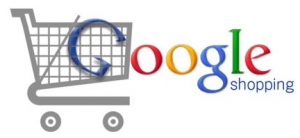
One of the best internet marketing investments you can make is ensuring that your online store inventory is properly setup, optimized and monitored to be added to the most searched website worldwide, Google Shopping. The challenge is that it is difficult for you to run all of the aspects of your business as well as make sure that your Product Listing Ads on the Google Shopping network are accessible to the consumers searching for them.
We know the time and effort it takes to set-up, optimize and manage Google Shopping campaigns as we discuss the basics for you in this article, you will see that there are a lot of things to consider when getting your products on the shelves of the ultimate digital store.
There are multiple reasons why you would choose a Google integrated shopping cart software that takes over the effort of the setup and management of your product listing ads in order to ensure your businesses success on Google Shopping.
The Ever Changing Platform Requirements
Each time the Google Shopping Platform receives an update, or there are changes to the listing requirements, your products stand the chance of being lost in a vast sea of your competitors’ offerings.
While reacting to every platform update can seem overwhelming, there are listing management opportunities that can help you optimize entire product lines or individual items to meet Google’s data requirements.
Let’s be honest; when setting up your product information to Google, its imperative that your data be unique, optimized, and of the highest quality possible. This is the largest digital store in the world, and standing out is critical to success.
Let’s Start with the Basics: Posting the Correct Signage
As they would while walking down the items on any aisle of a superstore, your online customers are going to quickly scan the name of the product and its price tag.
price tag.
Titles and descriptions that are both keyword rich and relevant to the product coupled with a unique, high quality image, will help the products in your store be easily scanned by the customer, stand out among the competition, and consequently illicit a higher CTR from potential customers.
However, keyword stuffing can also hurt your product placement so remember not to go overboard. Provide concise, accurate information to the consumer to result in more sales for your store.
Tending to Your Inventory: Keeping Fresh Products Available
Fresh product inventory in an online marketplace is just as important as the latest products in a big box store. Thus, keeping product data fresh and up to date is an important necessity so make sure you have your  inventory levels and availability updated as often as possible.
inventory levels and availability updated as often as possible.
An inaccurate or incomplete shopping campaign will result in your products not being displayed and will affect your bottom line.
In today’s world, it's more about the consumers experience and devoting time to becoming more customer-centric. When creating a shopping campaign, you also have to think about what you would want to see if you were the user shopping, as well as the relevance of the landing page that the user will be directed to.
Also important is catching the eye of the consumer while they stroll down the aisles of the various stores is essential. Structuring your Google shopping campaigns as you would a store front window on Main Street by subdividing your campaigns into relevant categories, best sellers, promotional / seasonal, etc. will allow you to control the cost of the listing better and get it in front of more customers.
Think Competitively: Show the Value of Your Store
Now that you have validated your Google Shopping ads are relevant to the pages you send the consumer, contain keyword rich content and have high quality images that stand out in the crowd, let's get into the meat of setting up the structure of the perfect shopping campaign.
Focusing on the product lines offered profit margins and the best selling products you offer will allow you to get more out of your Google shopping campaigns. Utilizing the current taxonomy of your website to bring the high value products to the top of the search results will make setting up your campaigns a snap.
Ok, Let’s continue…

To make managing your campaigns easier, you should group similar products together with the use of custom labels and pay attention to the campaigns making sure that one product group is not generating more traffic than another, if so; consider breaking that group into more of a granular grouping for better control. By subdividing your product groups you will begin to see trends in your product performance which will allow you to start using the new custom labels feature to group higher margin and better performing items into even better performing groups that make sense for your business. If you treat groups as you would a product catalog, keeping your sales volume and profit margins of individual products in the forefront of your mind, you can be sure to get the best selling products placed in front of the potential buyers.
Another important consideration to factor in when setting up your shopping campaigns is product seasonality or what products in your catalog sell better for the time of year it is. For instance, if you sell apparel, pausing campaigns including sweaters and winter coats during the spring and summer and activate campaigns that contain swimsuits and short pants. The same thought process would follow through if you sell Christmas items, you would not want to pay to advertise these campaign groups in the middle of spring unless the products are clearance or overstock items.
Promoting sale items and time sensitive product offerings it is best to set up multiple campaigns and utilize campaign priorities to promote these products. For instance, when running a holiday sale, by setting up a separate campaign will allow you to budget and manage the promotional products better. Utilizing campaign priorities will also allow you to keep the products active in lower priority campaigns and show the higher priority campaign ads regardless of the bids set on the product level.
Have we Proven our Point yet?
This is just the beginning of setting up and managing your Google Shopping Campaigns. It takes daily attention in order to get your products in the correct position and make them stay there, but the benefits from a shopping campaign are well worth the effort.






Leave a reply or comment below